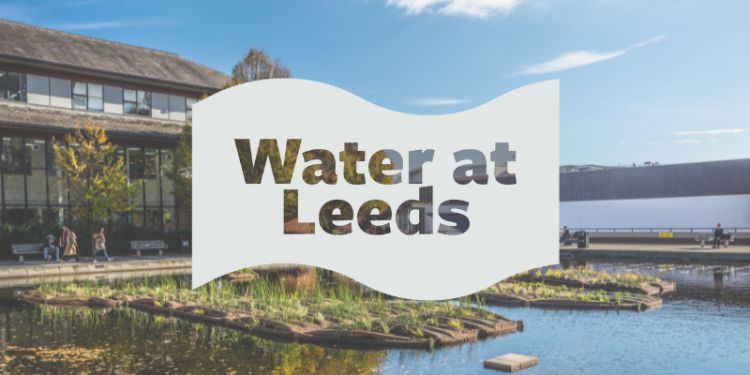Sculpture, theatre and textile innovation: supporting World Water Week at Leeds

This World Water Week, we highlight how Arts, Humanities and Culture projects are exploring water concepts and quality.
Water is the life source of our planet: our bodies, plants and oceans are made of it. Without it, or when it’s poorly managed, there can be disastrous effects on the planet, human and animal health.
The world’s water is a complex picture with lots of aspects to consider, such as marine life, freshwater, ice caps, flooding, sanitation and more.
At the University of Leeds, we have over 300 researchers working on water-related projects across all faculties. This research is supported by our oldest research institute, water@leeds.
This article focuses on research projects related to Arts, Humanities and Culture to support better outcomes for water.
Conceptualising water
Sustainable sculpture
Earlier this year, we announced the commission of a living sculpture for the stage@leeds.
The sculpture will be inspired by the Great North Bog, highlighting the importance of peatlands to the climate.
Artist Katie Surridge will collaborate with community participants from Mafwa Theatre to create the sculpture.
She will go with the participants to Askham Bog to explore the emotions that it evokes. The theatre members will paint their own tiles to be used as part of the sculpture.
This work is happening alongside projects such as WaterLANDS and Peat Data Hub to protect and promote peatlands in the UK.
MELTWATER
This September, water@leeds, the Priestley Centre for Climate Futures and Opera North will present “MELTWATER”, an audio-visual performance inspired by the sights and sounds of melting ice.
It incorporates field recordings and footage of melting glaciers and a musical ensemble of vocals, harp, flute and marimba.
There will be a post-show talk from Dr Natasha Barlow, an Associate Professor of environmental and sea-level change, and Professor Duncan Quincey, Professor of Glaciology at the University of Leeds.
Find out more about MELTWATER.
Understanding microfibre release
Researchers from the School of Design are tackling the issue of microfibres – tiny fibres that are released into waterways while laundering clothes.
They are collaborating with the Microfibre Consortium, which represents retailers that want to make their products more sustainable.
More consistent measurement
The team realised that the ways microfibre release was being measured were inconsistent, with different fabric types, washing conditions and machine types being used.
Some studies use domestic washing machines, but these are not able to catch all the fibres that are released while laundering.
So, the team created a new method to simulate the washing process that collects all of the wash water and fibres.
Their method, which allows them to measure the mass of microfibres released during a wash, is more controlled and accurate than previous methods.
Their method has now been adopted by many external agencies.
Now that there is a commonly used method, they will be able to inform a “UK footprint for microfibre discharge” to build a wider picture of the issue.
A complex issue
PhD researcher Alice Hazlehurst has used this method to evaluate different materials and fabrics to understand the factors that contribute to the variability of microfibre release.
Alice and the team have discovered how complex these factors can be – even within one type of fabric, there are different material, fibre and yarn characteristics which all release microfibres differently.
The researchers acknowledge the many questions that are still to be answered. For example, characterising which microfibres are most harmful to the environment will allow them to focus on adapting them.
The team are searching for collaborators across disciplines to expand their research, such as scientists who can investigate the effects of microfibres on the environment.
They are also keen to collaborate with industry and retail partners to design more efficient materials that are still wearable and attractive to consumers.
Industry partners
In a recent study done with charity Hubbub and retailer Primark, PhD researcher Kate Morris showed that price alone wasn’t a key factor in clothing durability; although it may make a difference to how well people look after the garments.
Dr Mark Sumner, project lead said:
“Action to make the fashion industry more sustainable is critical.
“But objectively measuring how long clothes can last is complex and difficult, because durability is affected by the type of materials and fabrics in the garment, how the clothes are made, and by how we wash and care for our clothes.”
More information
Researchers from the Faculty of Arts, Humanities and Culture collaborate across disciplines and industries to deliver projects that support better water management.
Find out more:




